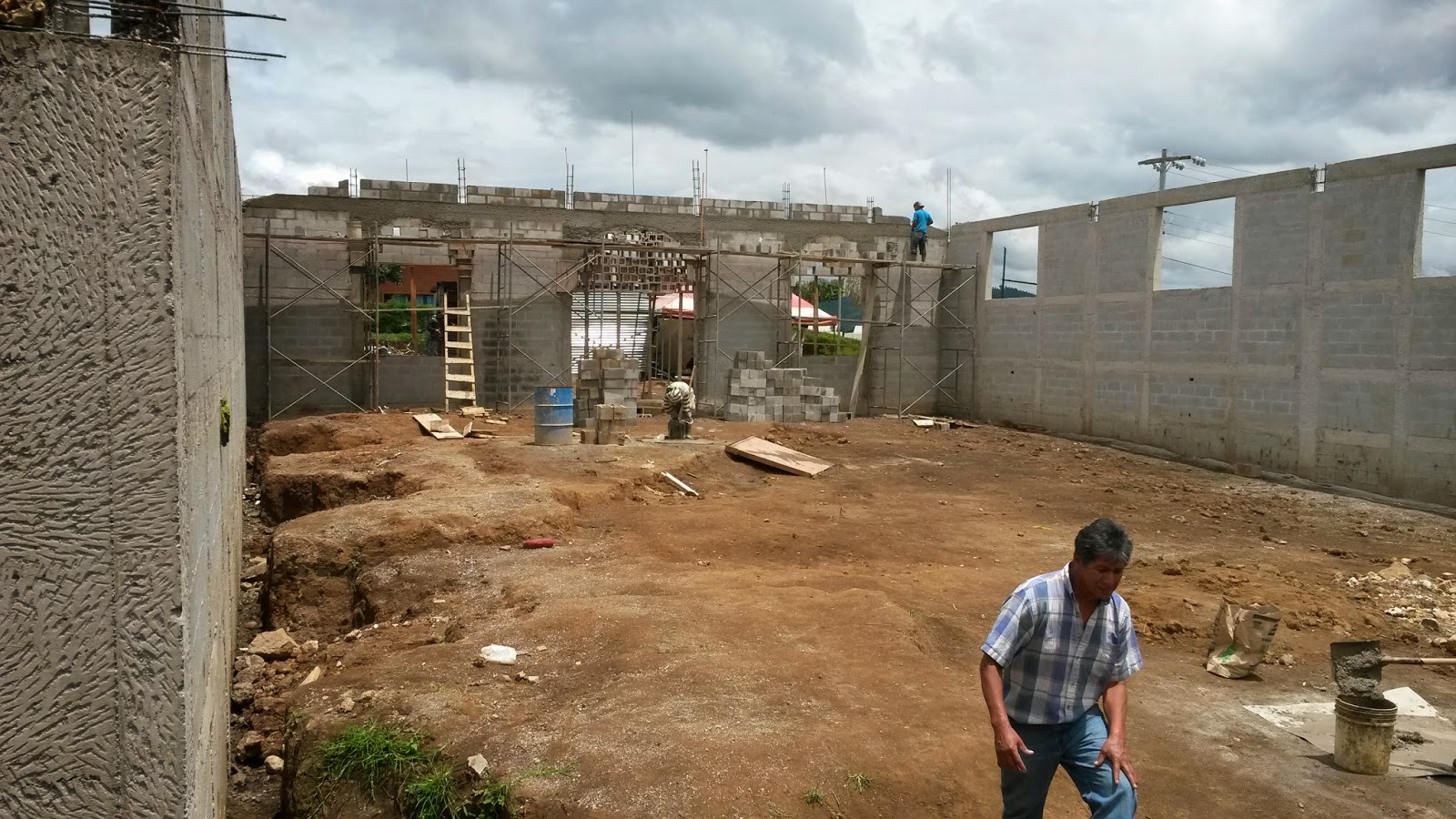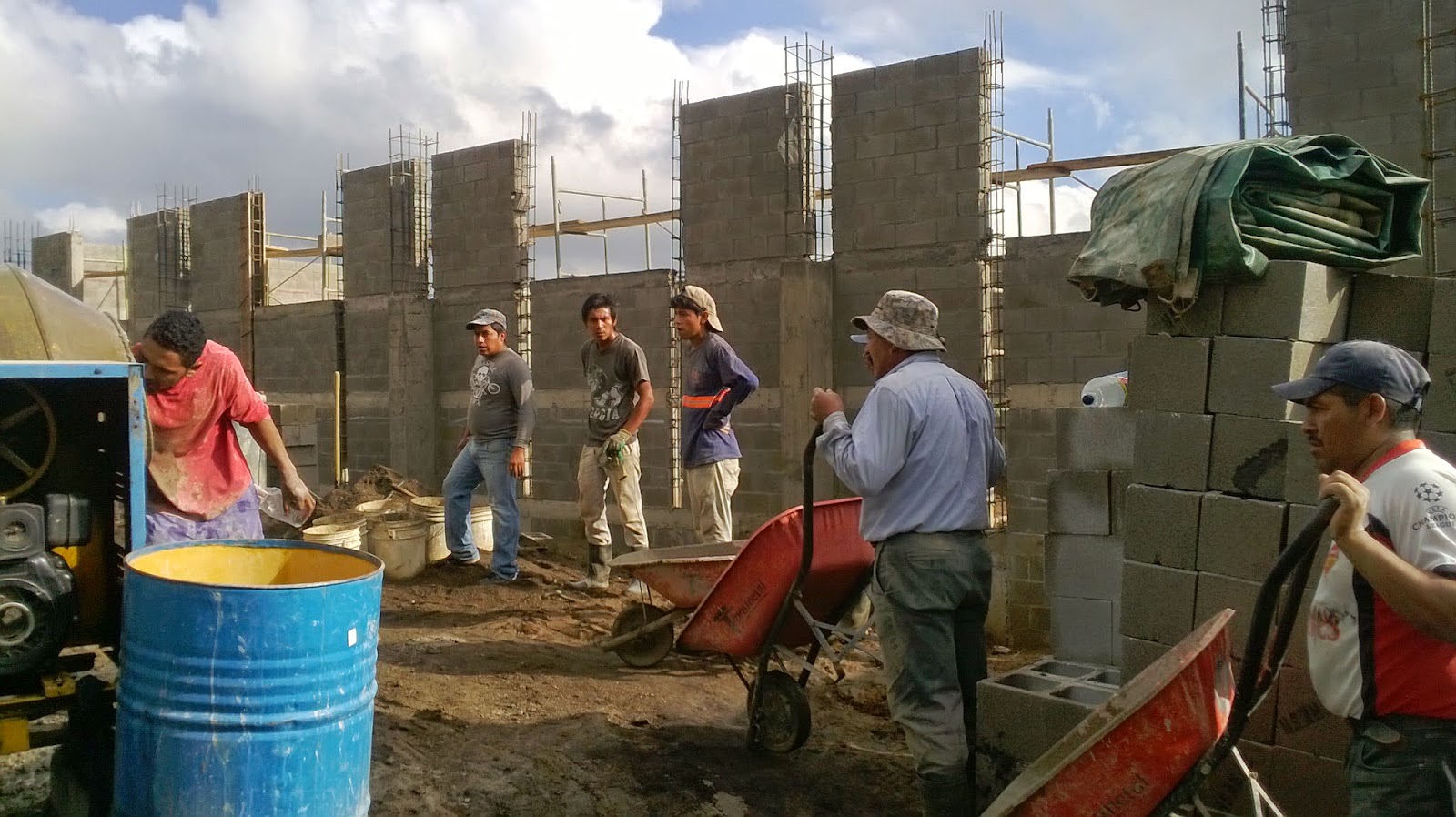I recently had a two week visit from Garett Burns, a
seminarian from the diocese of Wichita
and the godson of a close friend. Together with Fr Tulio Privera, the pastor of
the local parish, we took an excursion to Esquipulas and Tikal. Over the course of this time we visited the site of Guatemala’s
most important place of worship, its most ancient place of worship, and spent time here
at NPH, which will soon be the site of Guatemala’s newest place of
worship.

Esquipulas, located in the southeast, near the Honduran border, is home to a basilica that houses a large crucifix, which is the center of much of Guatemalan popular piety. The image was carved 500 years ago, and this shrine draws between four and five million pilgrims each year. It is considered by many to be the most important religious shrine in Central America. We had the good fortune of arriving on a quiet day, and were able to celebrate the Mass at the main altar, and view the image close-up, without having to fight the crowds and long lines of pilgrims that often fill the church. Another exciting element of the visit was seeing the beautiful altar and presider chair made by an artisan from nearby Antigua for Pope John Paul II when he was here in 1992. I had the chance to visit with this artisan a couple of weeks ago in his workshop to see about the possibility of his crafting the altar, retablo, ambo and chair for our NPH chapel. Fr. Tulio has a personal relationship with him, and believes that we can get something beautiful at a reasonable price. He is currently working on a proposal, which I hope will be ready within the next month. How great would it be to have our altar appointments made by the same artisan who made those in the most important and famous basilica in Guatemala!
For centuries its buildings were hidden, covered by the
thick jungle foliage that grew over them after the civilization mysteriously
disappeared. In the mid-1800’s archeologists began excavations, and magnificent
pyramidal structures restored, some reaching as high as 230 feet. These temple/pyramids
were used to offer sacrifices to the gods. In addition to sacrifices of animals,
humans were also sacrificed. (Mel Gibson’s movie, Apocalypto, portrays this
culture in its decline, along with human sacrifice). It is an eerie place, set
deep within the jungle of the state of Petén. Only a small portion has been
restored. From the top of one temple/pyramid, we could see above the tree line
an endless sea of green, looking out across the jungle canopy, with several of
the restored temple/pyramids piercing the canopy and reigning above it. Numerous
recent altars have been erected on the site, at which gather contemporary
practitioners of the Mayan religion to offer prayers and sacrifices (chickens).
Why Build a Chapel at NPH?
I had a couple of conversations last year with European
fundraisers for NPH, who mentioned that the chapel here might be seen by some
as an unnecessary luxury. At the very least, they said to me, the chapel should
be a multi-use space, and not reserved solely for sacred use. Even though NPH
was founded by a Catholic priest as a Catholic institution, it is a struggle to
maintain the Catholic side of its mission. Many of those who work or volunteer
here are not Catholic, or are Catholic but not practicing. And while I am on
good terms with everyone (kind of the official “nice guy”), one of my greatest
challenges is to carry the Catholic torch, with the hope that others may be
touched and illuminated by its light. Many are committed to the humanitarian
mission of NPH, but the religious element is seen by some as an “extra.” And to
be honest, I think that downplaying the religious element of our mission makes
fundraising easier in some settings.
Because NPH does not have official Catholic canonical status
with the Church, its leadership is free to adapt the religious aspect of its
mission as they see fit. The leaders I have met here are committed Catholics,
and the great veneration that continues for Father Wasson, the founder who died
in 2006, gives me hope that the commitment to raising kids in the Catholic
faith will remain. In order to secure resident priests, NPH needs to be able to
convince bishops and religious superiors of the centrality of the Catholic
mission. Of course, the most important factor in all of this is the adults who
live and work most closely with the kids in the homes. Just as with parents of
children in the Catholic schools of parishes where I have served, we “religious
types” can only succeed to the extent that the parents partner with us- as they
are the primary evangelizers and catechists of their children. (I have found
that within five or ten minutes in a school classroom I can tell which children
come from families where the parents practice the faith and which do not.) Here
at NPH, the care-givers in the homes where the kids live serve in this
important role.
I have read that almost all Buddhist boys in the country of Myanmar (Burma) spend some time living and
studying in a monastery. Even though the majority will not remain and will move
on, marrying and working regular jobs, this time of intensive spiritual
training will serve them throughout their lives. Going through intensive
spiritual training will benefit them throughout their entire lives, even if
they live in a country where the economy will never provide opportunities to
thrive professionally or economically, as might be possible in a country like
the USA.
Perhaps much is missing in the lives of the Pequeños of NPH.
I arrived here with the idea that kids in the US enjoy many advantages not
available to those here. And this is true. But I am convinced that the most
important thing every human being needs is a powerful and personal relationship
with God, mediated through Jesus Christ. And this should in theory be even more
available to the children here, who do not suffer from the same spiritual distractions
of money and materialism that are so apparent in my home culture. In addition,
the culture here supports and even revels in the expression of Christian faith.
Granted…
- it could be that when they leave the home they may not find meaningful work or a job that pays well…
- it could be that when they leave the home they may continue to struggle with personal traumas from their pasts which continue to haunt them…
- it could be that, given the effects of growing up without parents and a normal family atmosphere, when they leave the home they may have difficulty maintaining healthy and stable personal relationships, …
…but if we focus
on that which will help them not only in this life, but also in the next, I believe
that we will fulfill our principal mission. The NPH pillars of love, security,
sharing, work and responsibility represent a success formula with proven
results. While perhaps not articulated as forcefully, the spiritual mission of
NPH sets us apart from other merely humanitarian missions. Therefore, we need
to concentrate specifically on the development of a spiritual life, a love of
prayer, a personal relationship with Christ, a knowledge of the Bible and what
it contains, an authentic, healthy and religious concern for the well-being of
others, etc.
I am convinced that a beautiful chapel, centrally located
and accessible 24 hours a day, will help the children here to discover the
great love that God has for them, offering them a place not only to gather for
Mass, but also to spend time in meditation and personal prayer. The presence of
Christ in the tabernacle, in a building positioned to be at the heart of the
campus, will serve as a magnet, drawing seekers and those who struggle with
their faith to a place contemplation and reflection. The Eucharist celebrated
there will fortify the faith of these little ones, feeding them the Bread of
Life that will nourish their spirits and inspire them to make the world a
better place.










